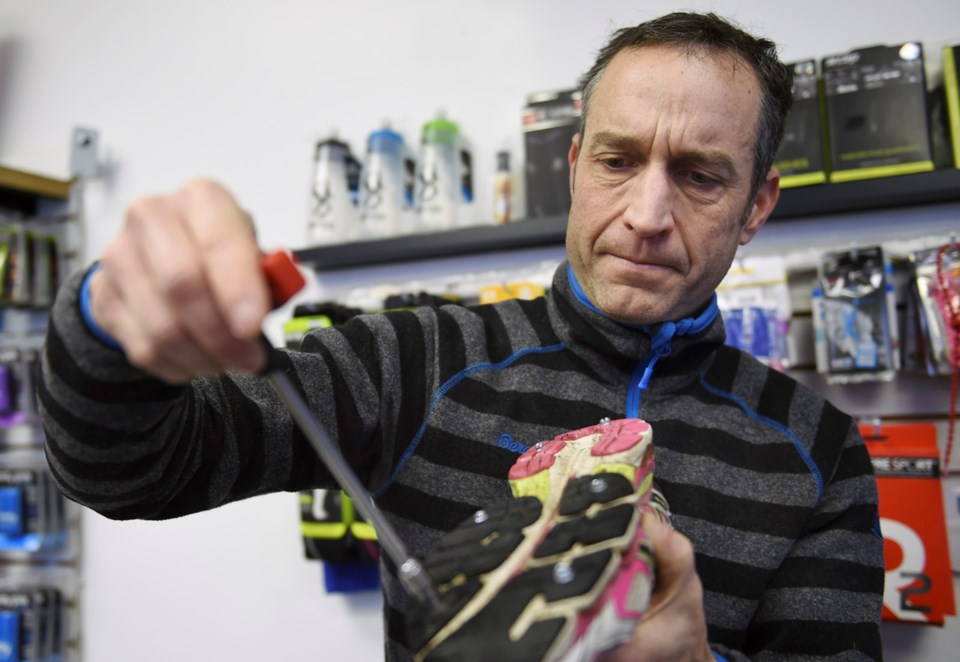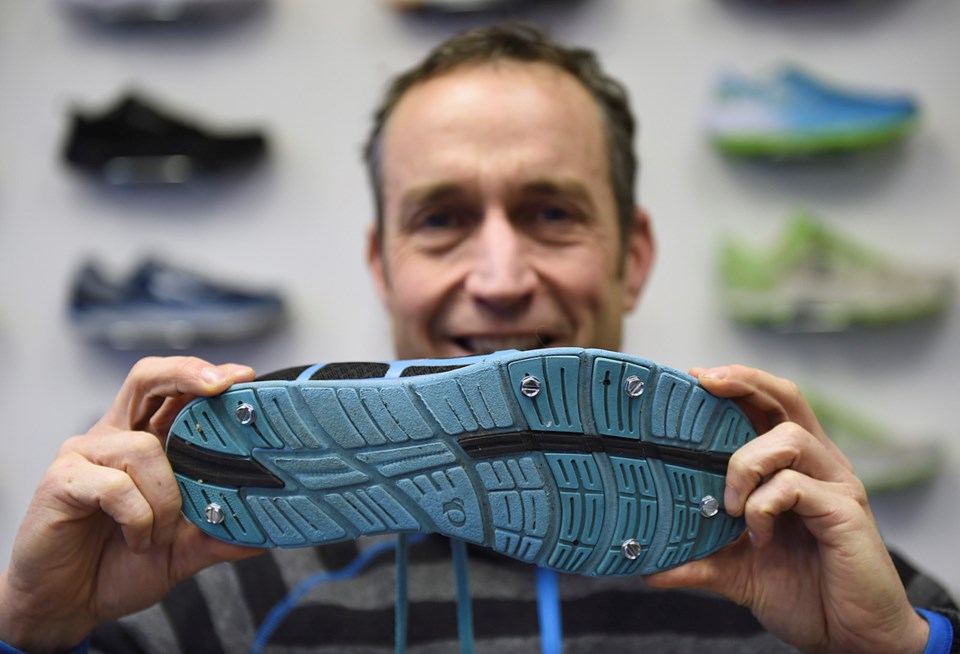On the shelves at Distance Runwear, a retail running store on Main Street, customers are buying sheet metal screws and paying to have them installed --- in the soles of their sneakers.
Itâs an old trick from colder climes said store owner Dave Cressman.
âI have been doing it for years and so have other people,â he said Wednesday from a second Distance Runwear located on the North Shore. âThis year, itâs been the only thing thatâs allowed me to go out and go for a run.â
Now notorious for unshovelled and perilously slick streets, Â鶹´«Ã½Ó³»has suddenly become a more treacherous place to venture outside for almost everything from running laps to errands. Hundreds of property owners have been for failing to clear their sidewalks. Emergency rooms and clinics are busier dealing with sprained wrists and concussions as people take painful spills on the slippery streets.
So how can you stay safe out there on a training run? One option is to screw it to the snow and ice.

Cressman uses six to eight sheet metal screws, which have large threads, and twists them into the bottom of running shoes. The size of the screw can be three-eighths to one-half an inch, he suggests, depending on the thickness of the tread. He has two pairs kitted out this way and says the metal rivet helps grip on slippery surfaces and provide added traction to keep him upright.
âWe are really dealing with a lot of ice on the roads,â he said. âWhere [the screws] really help is if there is a little bit of movement and slippage, inevitably there is some contour in such ice, and that is where the screw really sort of stops you and gives you that ever level of security and confidence.
âCold and dry work really well,â he added. âThe place that it does not work perfectly is an absolutely sheer, flat sheet of ice. If you were going onto an ice rink, itâs not sharp and pointy enough to really penetrate into that surface.â
Cressman grew up in Ontario, where he learned the trick because it was frequently used and excuses weren't accepted. "Might have been an old surly coach who said, what are you complaining about --- put them in your shoes and go for a run."
Cressman won the Ontario Colleges Athletic Association cross-country championship in 1989.Â
On the first day the screws were on display this week at Distance Running, he said four women came in to purchase sets and have them installed. Cressman did it himself, explaining the screws are installed into the bottom of the sole, not down through the inside of the shoe.
âYouâre not really drilling a hole, youâre just displacing rubber, so if a lot people have taken them out after the snow melts,â he said.
Running outdoors is not for everyone, but for the intrepid like Cressman, who can log up to 70 kilometres a week in more seasonable weather, the affordable added traction can propel a runner outside over more modest urban distances. He keeps his hardest training sessions indoors on a treadmill and reassures runners they will not lose competitive edge for missing a few weeks of hard running during the off-season.
For an annual New Yearâs Day run, the Fat Ass 50, Cressman said at least 10 people were screwing it to the ice. âThis year in particular was icy and far worse off than most,â he said.
Crampons and external strap-on spikes are suited for mountain terrain, but he said they can be too bulky for speedier concrete trails and also limit blood flow, which can be dangerous in cold weather.
For runners looking to add cleats to their sneakers, Cressman recommends they assess their insoles and treads for the wear-and-tear that signal pressure points on both feet and then avoid putting screws in those locations. Trail and error is also encouraged.
âBe very careful about where you put them,â he said. âSo, not one under the centre of a place where you apply a lot of force. For a lot of people, that could be under the ball of the foot and two toes, maybe more than two toes. The goal is to place the screws ahead or behind those pressure points or between toes.â
The three-time masterâs track champion also said itâs âwiseâ for some to stay inside since the slippery conditions challenge a runnerâs technique and balance.
âThe ice has a training effect, letâs call it,â he said. âYou wonât see over-striding or heel-strikes out on the roads because itâs just not safe to run that way.â
Twitter:



